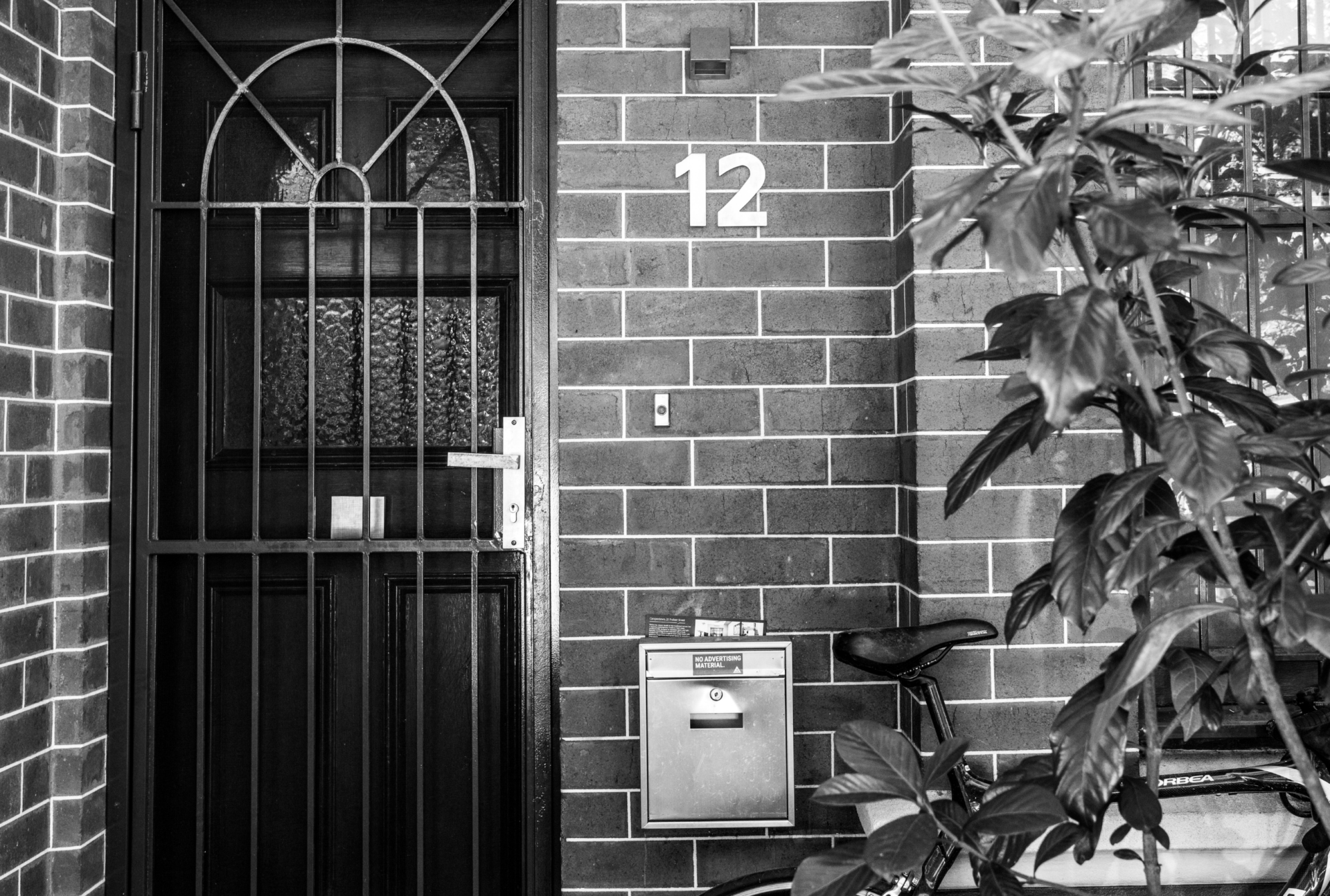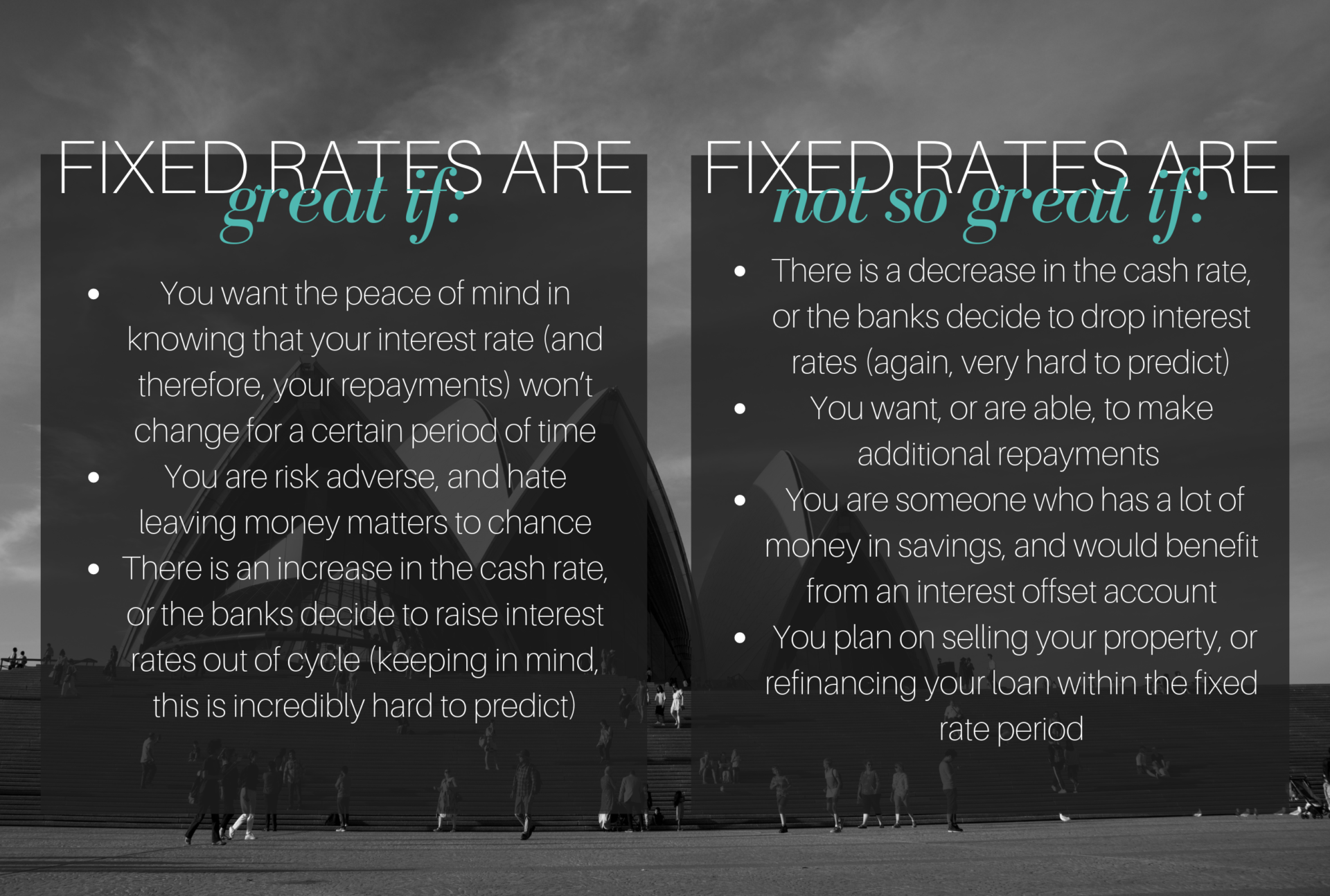In the last few weeks, we’ve seen a few lenders announcing some pretty low fixed rates, which in turn, has led to a renewed interest in this type of loan.
There’s been a lot of promos floating around, urging people to ‘take advantage’ of the low rates by moving to a fixed loan, and while we don’t necessarily disagree, we also believe there’s a lot more to the story…
At times such as these, we think it’s important to remember that a) trying to ‘beat the banks’ can often be a futile endeavour, and b) home loans are about more than just an interest rate…
Fixed Rates, 101
A fixed rate home loan means that for a certain time period, the interest rate attached to that loan won’t change. This can be for a period of anywhere between 1-5 yrs, and once the fixed rate period has ended, the loan will automatically revert to a ‘variable’ rate loan.
So, locking in a low interest rate sounds pretty good, right? And at times, it absolutely is! But of course, things are rarely that black and white in the finance world…
Theoretically, when things are looking down economically, fixed rates tend to be lower. What this means is that the banks are predicting rates to drop in the near future, and so they make their fixed rates more attractive to potential customers, and get them locked in. Conversely, when the banks are expecting things to improve economically (which generally coincides with an increase to the cash rate) they tend to raise their fixed rates, because...well because they can.
So, the only certainty you can take from this whole scenario is that actually, nothing is certain and nobody can predict the future, not even the banks. Sometimes they get it right, and sometimes they get it wrong. (Annoyingly, they mostly get it right…)
“Of course, fixed rate loans can be a great option for some, but if you’re fixing purely because you think you’re getting a bargain, you might be sorely disappointed in future" says Pure Finance's Managing Director, Brendan Dixon.
"Unfortunately, the banks tend to be a lot better at predicting rate cycles than the rest of us, and so this is where a lot of borrowers can get stuck" he says.
The Fixed Fine Print
Unlike its variable rate cousin, a fixed rate home loan can be a little more restrictive, so let’s get into the nitty gritty with some dot points:
- A fixed rate loan will see you locked in to that particular loan (and lender) for the chosen time period, which is anywhere from 1-5 years
- If you are forced to break the fixed period, you will most likely be charged a ‘break cost’ fee. These vary between the lenders, but can be anywhere from a few hundred dollars, to several thousand dollars (yikes!)
- Generally speaking, an offset account is not available with a fixed rate loan (however, there are a few lenders that do this)
- In most cases, you’ll be unable to make additional repayments on the loan without incurring a penalty
This last one, is a big one. At a time when interest rates are at historical lows, it is the absolute BEST time to be making additional repayments on your loan (where possible) to really chip away at that principal and help get rid of your loan sooner.
“A fixed rate loan should be more about your peace of mind and knowing your repayments will be consistent, than it is about chasing a low rate” says Brendan Dixon.
“I’ve never seen anybody ‘beat the bank’ by choosing a fixed rate loan, and so it’s incredibly important that if you do decide to fix, it’s for the right reasons."
Life after a fixed rate
Another trap that can befall borrowers is a failure to manage things when the fixed rate period is ending.
“A complacent borrower is a banks best friend and because these loans automatically revert to variable when the fixed period is over, this rate can often be a lot higher as a result” says Brendan Dixon.
“It’s really crucial that those who choose to fix are ready to renegotiate when the time comes” he says.
This is where Pure Finance’s annual review loan management system really comes in handy, because effectively, we do this job for you.
“We are big believers in an ongoing management of our client’s loans, and it forms a really important part of our service offering” says Brendan Dixon.
“For our clients that have fixed rate loans, it’s invaluable because it shields them from any default interest rate periods, and also, it removes the time-consuming process of renegotiating or moving the loan altogether” he says.
Can’t we just have both?
Not unlike that Old El Paso taco ad, you can indeed have a bit of both, by choosing to fix only a portion of your loan, instead of the full amount. This is a great option for those people who want to hedge their bets and take advantage of the benefits of both loan options, whilst mitigating some of the risk. You can even choose the percentages you want for each portion (e.g. 40% fixed: 60% variable) which is actually really nifty!
Thinking of fixing? Give us a call first! It’s super important that any financial decisions you make (no matter how small) are preceded by a chat with a trusted professional.
At Pure Finance, we believe that everybody can create wealth through property with a great financial strategy, and ensuring you are set up with a loan that is tailored specifically to fit you, and your lifestyle, is our specialty 😉
Want to chat? We’re all ears!
1300 664 603
info@nullpurefinance.com.au
The preceding information is of a general nature and does not take into account personal financial situations and endeavours. You should obtain advice based on your individual circumstances before acting on the above information.


